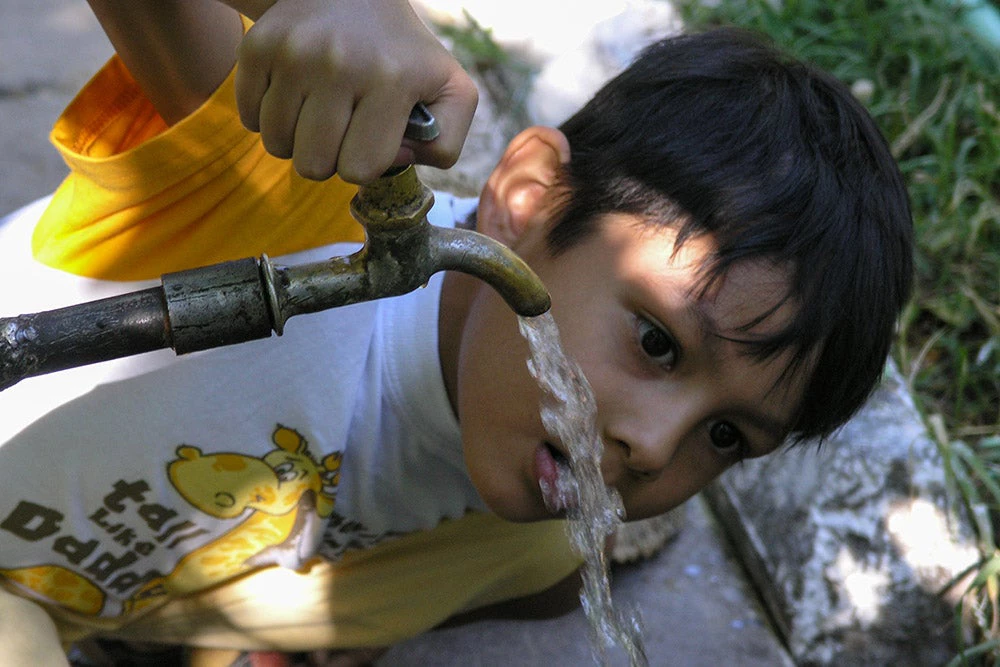I know firsthand how precious water is.
When I was growing up, my house in a small Moldovan town had piped water only for 2 hours per day and it was not drinkable. My and my sister’s daily chore was to fetch water, for which I had to walk half a kilometer to a nearby well.
Since then, however, many things have changed. Economic progress and investments in rural water services have improved the lives of hundreds of millions around the world. And the houses in my hometown now have piped drinking water.
Yet, despite the significant progress made globally, access to clean water remains a pressing issue in many countries. Here in Central Asia, where I now live, as many as 22 million people, or 31 percent of the region’s population, still lack access to safe water. Most of these people live in rural areas.
Those without in-house water services continue to walk long distances, use untreated water from streams or irrigation canals, or rely on tanker trucks to deliver water at a price and with unknown quality. For many women in Central Asia, having a washing machine is considered a luxury.
Concerning access to safe water, the disparity between rural and urban areas is significant, and more pronounced in some countries of the region. In Uzbekistan and Tajikistan only 31 percent of the rural population has access to safely managed water, compared to 86 percent and 57 percent respectively in the cities. And in the Kyrgyz Republic, rural areas also still lag in access to safely managed water, although that number has almost doubled since 2000, reaching 54 percent in 2017. Importantly, the Kyrgyz government has adopted an ambitious program to accelerate this progress further.
Even more startling is the sanitation situation in Central Asia. Although most of the region’s population has access to basic services, sewer connections and the use of septic tanks are limited in rural areas in all Central Asian countries. These poor hygienic conditions create both environmental pollution and public health risks.
Insufficient investments in water and sanitation also have economic implications. A recent World Bank study showed that it is more cost-effective for Central Asian countries to invest in water and sanitation services than to deal with the consequences of under-investment. As our estimates show, inadequate water and sanitation services cost Central Asia around $2 billion a year. Tajikistan is most affected, with losses accounting for 4% of the country’s GDP each year.
At the World Bank, we are working closely with the governments of Central Asia to help improve water supply and sanitation services across region. Over the past two decades, together with government partners, we have helped more than 1.1 million people gain access to water in Uzbekistan, 400,000 people in rural areas of the Kyrgyz Republic, and around 70,000 people in Tajikistan.
We aim to further enhance this support and, in doing so, will focus on making water and sanitation services resilient to the impacts of climate change, by helping institutions deliver them in a socially, financially, and environmentally sustainable manner.
With many countries in the region facing similar challenges, the World Bank is especially keen to facilitate regional dialogue around these issues. Last month, for example, we convened a regional conference in Tashkent on Climate-resilient and Sustainable Water Supply and Sanitation Services.
Video: Central Asia Regional Water Supply and Sanitation Conference
Over one hundred policymakers, utility managers and sector professionals from the region, and beyond, gathered to discuss the challenges of providing water supply and sanitation in their respective countries, as well as priorities for advancing climate-resilient services.
Improving the water sector’s financial viability and governance, climate-resilient planning, and public-private partnerships were among the top priorities identified by participants.
Going forward, we will continue to work closely with Central Asian governments, and development partners, to facilitate national and regional knowledge exchange in order to advance the water and sanitation agenda.
I firmly believe that safe and adequate water and sanitation is possible for everyone in Central Asia, but achieving this requires a shared commitment, political will and unrelenting determination to succeed.
Video: Interview with Lilia Burunciuc, Regional Director for Central Asia, World Bank.



Join the Conversation